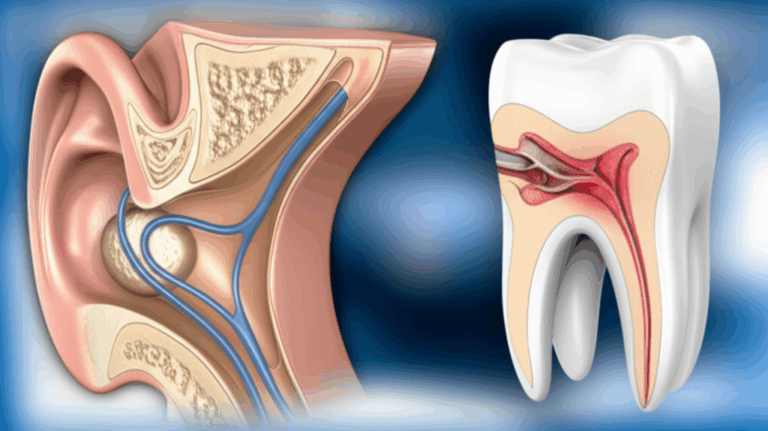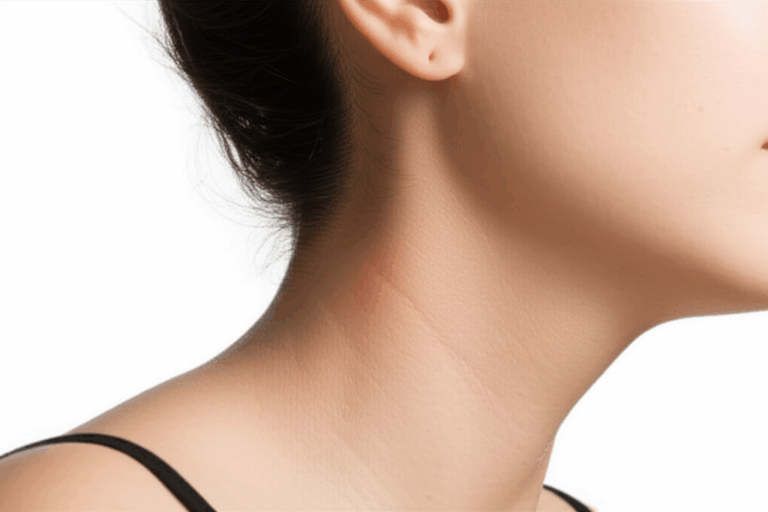
When Were Veneers Invented
You see them all over. On TV, in magazines, and maybe even on the person you work with. I’m talking about them perfect, bright, straight smiles. It make you wonder, "How do they get that?" For lots of people, the answer is dental veneers. But this cool invention didnt just show up from nowhere. It has a really interesting story that started way before we was born. This article is your inside look at the world of veneers. I’ll show you where they came from, how they work, and what they can do for you. If you’ve ever felt a little shy about your smile and wondered if there was a real fix that lasts, then you come to the right place. Let’s look into it together.
Article Outline
- Ever Wonder How Stars Got Them Perfect Smiles?
- So, Who Was the Smart Guy Behind the First Veneers?
- What Were These First Veneers Made Of?
- When Did Veneers Stop Being Just for a Little While?
- How’d We Go from Plastic to Porcelain?
- What Goes On in a veneer lab Today?
- Why Do People Get Veneers Anyways?
- Are Veneers Today a Scary, Forever Choice?
- What Can You Really Get from Veneers Now?
- What’s Coming Up for Smile Makeovers?
Ever Wonder How Hollywood Stars Got Those Perfect Smiles?
Let’s be real for a second. You’ve probably been watching an old black-and-white movie and thought, "Wow, their teeth are perfect!" It seems almost impossible for the 1930s. The truth is, it often was. Many of the actors and actresses of Hollywood’s Golden Age didn’t have naturally perfect teeth. They had the same problems we do: chips, gaps, stains, and crooked teeth. The movie people knew a good smile was super important to make someone a star. A crooked smile would look funny on the big screen and it could even cost an actor a big role.
This was a big problem for movies. They were selling a perfect, fancy life to people who really wanted it during the Great Depression. A bad smile just wouldn’t work. There was a lot of pressure. Imagine being a good actor but always being told your teeth weren’t good enough. This made them need a quick fix, bad. They didn’t need a fix that lasted forever. They just needed something that would look amazing for the few hours they was on camera. It was all about faking it for the people watching.
This is where the story of veneers really starts. It didn’t start in some clean dentist office worried about teeth health. Instead, it was born out of the shiny lights and pressure of Hollywood. The need was simple: make teeth look perfect on camera, and do it fast. This need pushed a creative dentist to come up with a fix that would change movies and, later on, the smiles of millions of people all over the world. It was a good example of how you invent stuff when you really need it.
So, Who Was the Genius Behind the First Veneers?
The guy who saved the day was a dentist in California, Dr. Charles Pincus. He wasn’t just any dentist. He was the dentist to the stars. He had all the big Hollywood stars as his patients, like Shirley Temple, Judy Garland, and James Dean. Dr. Pincus understood the problem better than anyone. He saw right away how a little problem with teeth could mess with a star’s confidence and job. He knew that regular dentists, who were slow and it often hurt, wasn’t the answer for a fast movie set.
Dr. Pincus got to thinking. In 1928, he had a great idea. What if he could make thin covers that could be stuck on an actor’s teeth for a little bit? These covers would hide any problems and make it look like they had a perfect smile. He called his invention "veneers." It was a brand new idea. For the first time, a person could change their smile in one day, with no drilling or forever changes to their real teeth.
He started making these special new smiles for his celebrity patients. An actor could walk into his office in the morning with a smile with gaps and walk out in the afternoon with a smile ready for the camera. It was like magic. Dr. Pincus became a legend in Hollywood. He wasn’t just fixing teeth. He was helping make careers and create the famous pictures we still love today. His work showed that a great smile was a powerful tool.
What Were These Early Veneers Actually Made Of?
You might think it was something fancy but the first veneers were much simpler. Dr. Pincus made his first veneers out of acrylic. That’s a kind of plastic he could shape to look like a perfect tooth. He would carefully make each veneer to fit an actor’s own tooth and smile. The goal was to make them look real under the bright movie lights. The color had to be just right so it would look like real teeth on a black-and-white movie.
Now, here’s the thing. These first veneers was not meant to last long. They were just for show. Think of them like a costume for your teeth. Dr. Pincus used a special denture glue to stick the plastic shells onto the actors’ teeth. This glue was just strong enough to keep them on for a few hours while they made the movie. It wasn’t a forever glue at all. Actors had to be careful not to eat or drink with them in, as they could easy pop off.
Think about how stressful that was. Being an actor, trying to say your lines right while worrying that your teeth might fall out any second. It was a temporary, risky fix. Once the director yelled "Cut!" for the day, the veneers came off. They were a great trick for the camera but they didn’t work for real life. The problem of having a not-so-great smile was solved for a few hours, but the bigger problem of a forever fix was still there.
When Did Veneers Stop Being Just a Temporary Fix?
For many years, veneers was a secret trick for people in Hollywood. They were a temporary trick, not a real dental treatment. The big change came in 1959, because of another smart person, Dr. Michael Buonocore. He wasn’t trying to help movie stars, though. He was a scientist looking for better ways to glue fillings to teeth. He found something huge that would change dentistry forever. He found that if you gently "roughed up" the top of a tooth with a light acid, it would make tiny little holes you can’t even see.
This roughing up thing was the key. These tiny holes on the tooth gave a glue something to hold on to. Think of it like trying to glue two smooth pieces of glass together. They’ll probably slide apart. But if you rough up the sides with sandpaper first, the glue has a much better grip. Dr. Buonocore’s roughing-up method did the same thing for teeth, making a super strong glue that was way tougher than any simple sticker.
This discovery changed everything. It made way for the kind of smile makeovers we have today. Dentists figured out they could use this roughing-up and gluing method to stick things to teeth for good, including veneers. All of a sudden, the idea of a veneer that could last for years, not just hours, was now real. It took a while for the tools and materials to get good enough, but Dr. Buonocore got it all started. The temporary Hollywood fix was finally on its way to becoming a real, life-changing fix for everyone.
How Did We Get from Acrylic to Porcelain?
Even with the new glue trick, the first acrylic veneers had problems. Acrylic was an okay material for a quick fix, but it had problems if you used it for a long time. It got stained easy, so a person’s new white smile could turn yellow over time from coffee, tea, or smoking. Acrylic also wasn’t very strong and could break or wear out. Dentists needed a better material that was both pretty and strong enough for everyday stuff.
The answer came in the 1980s when they made porcelain veneers. Porcelain was the perfect stuff. It had a great, kind of see-through look that looked just like real tooth enamel. Light goes through a porcelain veneer kind of like it goes through a real tooth, giving it a real, lively look. It was a big step up from the flat, boring look of acrylic. Plus, porcelain was super strong and tough.
Even better, porcelain didn’t stain easy. That meant people could enjoy their coffee or red wine without messing up their new smile. This was the fix everyone had been waiting for. The mix of Dr. Buonocore’s gluing trick and the new porcelain stuff created the modern veneer. Now, dentists could give a fix that was pretty, strong, and lasted a long time. The days of veneers just being a Hollywood trick was over.
What Happens in a Modern Veneer Lab Today?
Getting veneers today is a job for you, your dentist, and a good dental tech. After your dentist gets your teeth ready and takes a good mold of your teeth, that mold gets sent to a special lab. This is where the real magic is done. A tech who’s real good at this uses your mold to build your new smile, one tooth at a time. It’s a job that mixes science, tools, and a good eye for little things.
This special lab is often called a veneer lab. These techs are like artists for your mouth. They use the material your dentist picked—usually porcelain or a composite resin—to make each veneer. They pay a lot of attention to the shape, size, and color that you and your dentist agreed on. They can add little bumps and different shades to make the veneers look super real. Your dentist might work with a lab close by or a bigger special place like an arch dental lab. Some dentists even work with a good china dental lab to get great work done for less money.
The tech’s job is to make a set of veneers that not only look great but also fit perfect. If they don’t fit right, food and germs can get stuck, which can lead to problems later. A great fit makes sure your veneers feel good and work just like your real teeth. Once the veneers are made, they are sent back to your dentist’s office. Your dentist will then check the fit and color one last time before gluing them to your teeth for good, finishing your new smile.
Why Do People Even Get Veneers?
People get veneers for all kinds of reasons. For many, it’s about fixing problems with how their teeth look that bothered them for years. Veneers are a great fix for teeth that are chipped, cracked, or worn out. They can instantly close little gaps between your teeth you might feel shy about. If you have dark stains that whitening don’t fix, veneers can give you a smile that’s white for good.
But it’s not always just about looks. Veneers can also help your teeth health overall. For instance, if a tooth is a little cracked or has a big, old filling that’s breaking, a veneer can cover the front, making it stronger and keeping it from getting more damaged. By covering up problems, they can make a tooth surface that is easier to clean, which can help in stopping some dental diseases by having less plaque.
But the biggest reason people get veneers is to feel more sure of theirself. Your smile is one of the first things people see about you. When you’re not happy with it, you might find yourself hiding it in pictures or not being yourself around people. The problem is you dont have confidence, and that can hurt your life at home and at work. You get upset ’cause you feel like you can’t be you. The fix is a new smile that lets you laugh big and say hi to the world with a smile. It’s about more than just teeth; it’s about feeling good about yourself.
Are Today’s Veneers a Scary, Permanent Choice?
One of the biggest questions I get is about how it’s done. People get scared about changing their real teeth forever. It’s true that for regular porcelain veneers, your dentist needs to shave off a real thin layer of enamel from the front of your teeth. We’re talking about half a millimeter—about as thick as your fingernail. This is done to make room for the veneer so it don’t look bulky and to make a good surface for the glue.
Because a little bit of enamel is taken off, you can’t go back from it. You can’t just decide to take the veneers off one day and go back to your old teeth. This can sound scary. The thought of changing your teeth forever is a big deal and it makes people stop and think. They worry, "What if I don’t like them? What if it goes wrong?" It’s a totally normal fear. Nobody wants to make a forever choice they might feel bad about later.
But, the way they do it has come a long way. Dentists now use computer programs to show you how your new smile will look before they even do anything to your teeth. You can say yes to the design and make changes until you are 100% happy. Also, there are now "no-prep" or "minimal-prep" veneers. These are even thinner and need very little or no enamel taken off. This makes them an easier way that you might be able to change back for some people. The important thing is to have a long talk with your dentist to find the right fix for you.
What Can You Really Expect from Modern Veneers?
If you decide to get veneers, you can expect something that really changes things for you. The final smile is made just for your face. It ain’t about getting some cookie-cutter "Hollywood" smile. It’s about getting a smile that looks like your smile, only better. A good cosmetic dentist will work with you to pick the perfect color and shape that matches your skin, your face shape, and who you are. The goal is a real, pretty result that don’t look fake.
You can also expect them to be strong and they last. If you take care of them right, porcelain veneers can last for 10, 15, or even 20 years. Taking care of them is pretty simple. You just brush and floss them like your normal teeth. You should still see your dentist for regular checkups and cleanings. While veneers don’t stain easy, you’ll still want to be careful and don’t use your teeth like tools to open stuff or bite down on very hard things like ice.
The biggest thing you’ll get is a change in how you feel. It’s a great feeling to look in the mirror and love what you see. It’s the freedom to smile without thinking about it. I’ve seen it over and over. Someone who used to hide their mouth when they laughed is now the funnest person at the party. It’s a big change that’s about way more than just your teeth. It’s the fix for that nagging feeling of being shy, and it lets you feel good being you.
What’s Next for the World of Cosmetic Dentistry?
The world of veneers is always changing. Just look how far we come from Dr. Pincus’s plastic stick-ons. What’s coming is even cooler. We are seeing big steps forward in the stuff they’re made of and how they’re made. New kinds of ceramic are being made that are even stronger and more real-looking than what we got today. This means veneers will last longer and look even more like real teeth.
The biggest change is happening with computers. 3D printers and machines in the dentist office (like CEREC) are getting more popular. This means that soon, you might be able to get your veneers designed, made, and put on all in one trip to the dentist. This would mean you don’t have to wear temporary ones and wait for a lab to make them. It makes the whole thing faster, easier, and more exact.
As the tools get better, the whole thing will be less of a big deal to your teeth. We’ll probably see more and better choices for no-prep veneers, making smile fixes something more people can get, even people who are nervous about the old ways. The trip from a Hollywood trick to a real fix for everyone has been amazing, and it ain’t over yet.
Things to Remember
- Veneers was invented in 1928 by Dr. Charles Pincus for Hollywood movie stars.
- The first veneers was made of plastic and was just for a little while, stuck on with denture glue.
- A new tooth-roughening trick in 1959 made it so veneers could be glued on for good.
- Veneers today are mostly made of porcelain. It’s strong, don’t stain easy, and looks real.
- Getting veneers is a job for you, your dentist, and a good tech in a veneer lab.
- Veneers can fix lots of problems with how teeth look and make you feel way more sure of yourself.
- Putting on regular veneers is a forever thing, but there are easier "no-prep" kinds you can get too.








